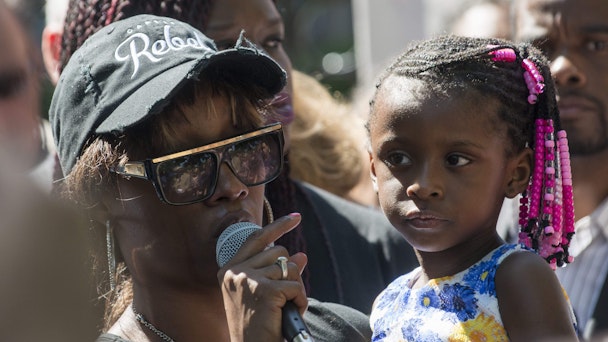The day that Facebook Live changed citizen journalism
The cultural fallout from Philando Castile’s death being streamed live on Facebook after he was shot by a police officer marks a turning point in citizen journalism’s parity with news broadcasters in the mind of the viewer.

Diamond Reynolds' post has put both citizen journalism as well as race relations under the microscope
As a consequence of that, the world now knows Diamond Reynolds. Castile’s girlfriend, who shared with millions the harrowing scene in which her partner dies next to her as she bravely reports in real-time her exchange with the cops that fired the shots.
“I wanted everybody in the world to see what the police and how they roll,” Reynolds explained as to how she was able to remain calm. “I didn’t do it for pity. I didn’t do it for fame. I did it so that the word knows these police aren’t here to protect us.”
Is this the democratisation, or devaluation of reporting?
In that moment Reynolds became a reporter. That she felt the need to put her own life in danger to ‘get the story’ says a lot about the value people affix to journalism today.
A rudimentary search for Philando Castile’s name on Twitter throws up damming indictments on how today’s media report contentious issues like systemic racist, while some even believe Reynolds should be awarded a Pulitzer prize for her endeavour. What’s more just six per cent of Americans trust the media according to an American Press Institute survey of more than 2,000 adults.
It’s debatable whether citizen journalism can become that trusted source and whether or not it even needs to. A more pressing concern for some media experts is how a reader’s voracious appetite for content constantly is pushing them to stories that don’t always have the facts.
Granted, there’s a raw quality to Reynolds’ recording but the speed at which its spreading begs the question whether subjective voices and eyewitness accounts could make objective journalism irrelevant. Indeed, its biggest flaw showed itself last night when an innocent man was wrongfully made out to be one of the snipers involved in shooting 11 police officers in Dallas on Twitter.
Reliable sources?
Media owners have grappled with this issue since the rise of citizen journalism. From its earliest instances like the coverage of the Arab Spring in early 2011 to the images Alton Sterling being shot by police earlier this week, news outlets have tread a fine line in terms of trying not to become too reliant on these images when trying to tell stories as they unfold.
But the advent of live-streaming apps like Periscope, Meerkat and YouNow has made it harder to identify the veracity of the source. Neither of these services had the scale of Facebook and so it something like an Arab Spring uprising needed to happen for people to sit up and take notice of what was being shared. Not any more; with around 1.65 billion monthly active users, Facebook has a reach unrivalled by any other social platform in the world. And Reynolds’ post was a glimpse of what that reach can do.
Incidences like Castile’s death have been happening for years and yet it’s arguable that no reporter has bottled the complex racial tensions at play as well as Reynolds did. The sheer scale of Facebook meant it then travelled out a speed, with it feeling all the more real to people because they saw it happen themselves. It’s only a matter of time before others Facebook users follow suit, though that glut of content will heighten calls for some form of censorship from the platform.
Are they 'filters', or is it 'censorship'?
What Facebook chief Mark Zuckerberg thinks could be the most “emotional, raw and visceral way” to communicate on his platform, could just as easily be sensitive or violent live content. To censor, or not to censor, is a quandary the social network has been tight-lipped on to date, no doubt mindful of the challenge it faces monitoring all those live videos as they come in.
The simple answer is there should be some censorship of what the pubic find unacceptable, e.g. prejudice, nudity, sexual activity, violence or profanity. However, there would be a fear that such content uncensored would change the shape of society for the worse, with people becoming impressionable and influenced by the filtered content. Another way to look at it is by bringing such content to the fore it would highlight other things going on in the world and maybe people can use those insights to improve society as oppose to harming it.
So the question is then should applying a moral filter to content a matter of human importance and who decides what filter is the right one.
I personally land on the idea that decisions that we make should be for the common good and good where people live in harmony and away from violence,” said Rowan Manning, chief commercial officer at content agency Seven.
“However I don’t think it is a simple as one entity taking responsibility. I think principle should be applied here, and that is that the entity, which is the ‘scalar’ or pusher of such content, has the ultimate responsibility to censor their content. For example, if it was a really important, well known influencer who had lots of followers, then they themselves are a ‘scalar’ and therefore has the moral obligation to censor content. If the creator is an unknown criminal propagating violence, then actually it is the platform allowing such content to be accessed and scaled which should take responsibility.”

